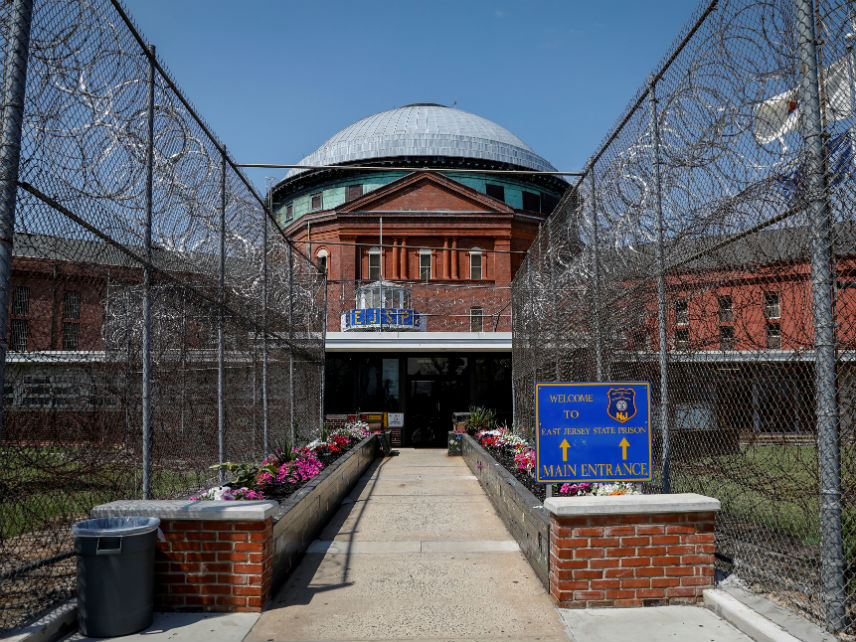What Mass Incarceration Looks Like, State By State
The ACLU is releasing reports on what's driving mass incarceration in every state, and how to cut prison populations in each one.

For several years, the most ambitious goal among criminal justice reform advocates has been to reduce America's staggering and world-leading reliance on prisons and jails. On Wednesday, the American Civil Liberties Union (ACLU) released its first batch of reports on how to do exactly that in all 50 states and the District of Columbia.
The ACLU's Campaign For Smart Justice, along with the Urban Institute and the ACLU's state affiliates, published the first 25 of 51 "blueprints" identifying the drivers of mass incarceration in each state, as well as what policy changes could cut their prison populations by 50 percent.
"No matter what state you live in there is a mass incarceration crisis," says Udi Ofer, the director of the ACLU's Smart Justice campaign, "but the solutions have to be state-focused. That's the goal of these blueprints: to provide a state-by-state analysis of how each state can cut incarceration in half and combat racial disparities in incarceration."
One of the ongoing debates among criminal justice advocates is what exactly is responsible for the meteoric rise in prison populations since the 1970s. Michelle Alexander's influential The New Jim Crow popularized the idea that our prisons and jails are filled with nonviolent drug offenders. Other academics, such as Fordham Law School's John Pfaff, have pointed out that nonviolent drug offenders make up only about 16 percent of the overall prison population. Even if every nonviolent drug offender were released from prison tomorrow, it would only make a small dent in the estimated 1.9 million Americans serving time in prisons and jails. Ending mass incarceration, as it's popularly understood, would also require shortening sentences for violent crimes, a politically fraught enterprise.
"There's these national conversations about whether it's all about drugs or not all about drugs," Ofer says. "The truth is, it is and it isn't."
For example, according to the ACLU's report on Michigan, 74 percent of inmates are serving time for violent offenses, driven by the state's especially tough "truth in sentencing" laws, which largely abolished parole.
But in Oklahoma, which recently overtook Louisiana as the per capita incarceration leader in the U.S., "drug offenses are a leading driver of incarceration," Ofer says. "Thirty-two percent of all admissions to prisons are related to drugs. Three out of four people entering Oklahoma prisons have been sentenced to a drug, property, or other offense that did not involve violence."
Other states' incarceration rates are driven by so-called "three-strikes" laws, harsh mandatory minimums, habitual offender laws, or punitive bail practices, so there's no one-size-fits-all solution.
Each report also examines racial disparities in incarceration. Ofer says the ACLU and Urban Institute's research showed that, somewhat counterintuitively, reducing prison populations without addressing bias in enforcement can lead to an increase in racial disparities.
New Jersey has led the U.S. in decarceration, reducing its prison population by 35 percent since 1999. But it also leads the country in racial disparities in incarceration: Black residents make up 61 percent of the prison population, but are only 13 percent of the state population overall.
"Part of the reason we released these blueprints is to avoid another New Jersey," Ofer says.
In 2014, the ACLU launched its campaign to reduce incarceration in the U.S. by 50 percent by 2020, but progress has been slow and hard-won, even with tens of millions of dollars in funding. Ballot initiatives are expensive and difficult to sell to voters, and legislative reformers have had to negotiate with law enforcement groups, which tend to object to all but the most cosmetic changes to the status quo.
For example, despite a successful 2016 ballot initiative to reclassify drug possession and some other crimes as misdemeanors, Oklahoma's prison population is projected to keep rising.
"Those policy reforms absolutely led and will lead to thousands of fewer people going to prison for low-level offenses, but our blueprint shows our job is not done, and a lot more needs to happen."
Show Comments (16)